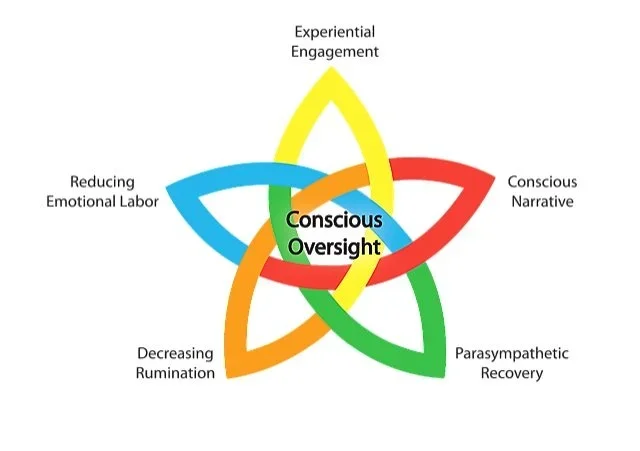Affiliate Spotlight: Q&A with Brian C. Miller, PhD, Developer of CE-CERT [1]

Resource Description
![]() Date: 10/13/2025
Date: 10/13/2025
![]() Authors: Brian C. Miller, Kalila Papanikolas
Authors: Brian C. Miller, Kalila Papanikolas
![]() Time: 6 minute read
Time: 6 minute read
The NCTSN Affiliate Program creates opportunities for Network members formerly funded by SAMHSA to stay connected with the NCTSN. The Affiliate Spotlight highlights the work of Affiliate members and organizations, recognizing and capitalizing on their unique and valuable expertise to assist current grantees with their specific projects and to advance the field of child traumatic stress.
Brian C. Miller, PhD is the creator of the CE-CERT model, a skills-based, evidence-informed approach to thriving in the helping professions. Dr. Miller has experience in various behavioral health, direct practice, clinical leadership, and policy roles. He is the author of Reducing Secondary Traumatic Stress: Skills for Sustaining a Career in the Helping Professions [2].
In this Q&A, Dr. Miller discusses his professional journey, the development of CE-CERT, and how professionals and organizations can use CE-CERT to build resilience and improve engagement.
Q: To start, can you tell us a bit about your professional background and what led you to develop the CE-CERT model?
A: My experience includes tenure as Director of Children’s Behavioral Health at Primary Children’s Hospital, Director of Mental Health Services for Salt Lake County; Director of the Trauma Program for Families with Young Children at The Children’s Center in Salt Lake City; Clinical Director of Davis Behavioral Health, Associate Director of the Utah State Division of Mental Health; and as a psychotherapist in private practice. I hold a Ph.D. from Case Western Reserve in Cleveland, Ohio, where I was a Mandel Leadership Fellow. I am the past board president for the National Alliance on Mental Illness, Utah Chapter, and serve on the editorial review boards for the journals Traumatology and Contemporary Psychotherapy and am an individual affiliate member of the National Child Traumatic Stress Network.
In my roles as practitioner and program leader, I found that the usual answers for the work distress of trauma workers (self-care, work/life balance, etc.) were not helpful. They were not evidence-based and were insufficient. I was motivated to craft supports that were effective for helping workers in trauma-exposed workplaces sustain not only emotional well-being, but also passion for their work. When I broke out of the “echo chamber” of typical burnout/compassion fatigue models, I found that there is a rich research literature in practices that went well beyond “self-care”.
Q: What is CE-CERT (Components for Enhancing Clinician Engagement and Reducing Trauma) and how does it work?
A: CE-CERT is a suite of practices that are designed to support professionals who are regularly exposed to secondary traumatic stress in their work—especially those in behavioral health, child welfare, advocacy, and healthcare roles. The goal of the practices is to help clinicians and supervisors enhance their capacity for engagement, emotional regulation, and resilience while reducing the impacts of traumatic exposure.
The CE-CERT model includes five core practice domains:


- Experiential Engagement – “Avoiding avoidance”—the clinical research literature makes clear that avoiding distressing material is at the heart of many clinical conditions (including trauma). These practices involve targeting the aspects of our work that we tend to emotionally avoid—or actually avoid—to lessen resistance and increase willingness.
- Reducing Rumination – “Not stress-stretching”--Managing the tendency to mentally replay distressing events by learning to interrupt negative thought loops.
- Conscious Narrative – “Narrative therapy for therapists”--Directing a purposeful, empowering narrative about one’s work to support coherence, motivation, and resilience. Paying attention to what we notice, how we notice it, and what meaning we make of it.
- Reducing Emotional Labor – “Making the work easier.” Actively understanding and addressing the aspects of our work that deplete our energy or morale. Substituting active responses for passive ones. Converting our client relationships into energy sources without excessive masking or suppression.
- Parasympathetic Recovery – “Creating space throughout the workday”—Rather than waiting for evenings and weekends to recover, this is about actively creating breathing spaces during our work.
Q: What types of organizations or professionals can benefit from CE-CERT?
A: CE-CERT is especially beneficial for:
- Mental health professionals
- Child welfare and family services providers
- Medical staff and hospital-based teams
- Advocacy center clinicians and coordinators
- Crisis responders and trauma-focused agencies
- Supervisors overseeing direct service staff
- Any professional exposed to the emotional demands of trauma work can use CE-CERT to build resilience and improve engagement.
Q: In what ways does CE-CERT differ from other approaches supporting mental health providers and agencies?
A: The most distinctive quality of CE-CERT is its focus on the real-time experience of doing trauma work. Rather than a focus on recovering from work, the target is on the emotional experience of the worker during the work.
Unlike many wellness programs that focus on general self-care, CE-CERT is:
- Skills-based – providing teachable, repeatable tools.
- Work-centered – targeting the stress that arises during the actual delivery of care.
- Team-focused – designed to be implemented within organizational structures, not just individually.
- Evidence-informed – rooted in cognitive-behavioral and trauma science.
- Supervision-integrated – includes reflective practices for supervisors and leaders.
- CE-CERT is not about avoiding stress, but about navigating it skillfully.
Q: Can you describe the process of getting CE-CERT accepted into the California Evidence-Based Clearinghouse?
A: CE-CERT was reviewed by the California Evidence-Based Clearinghouse for Child Welfare (CEBC), a widely recognized resource for evidence-based practices. The model underwent a submission and evaluation process, which included:
- Review of research studies and published outcomes
- Assessment of training fidelity and replication potential
- Evaluation of effectiveness for child welfare and trauma-exposed populations
- CE-CERT was evaluated concerning its relevance and effectiveness in addressing secondary traumatic stress among child welfare professionals, but could not yet be rated due to the need for more effectiveness research (on-going). CE-CERT is described as "evidence-informed" because it is founded on voluminous research, but the synthetic model is new to the evaluation field. CEBC considers CE-CERT to be a "promising practice".
Q: How can organizations get started with training and implementing CE-CERT, and what kind of implementation support or guidance is available?
A: Organizations can begin with an introductory CE-CERT training facilitated by certified trainers. From there, implementation support may include:
- Ongoing consultation calls
- Reflective supervision training for managers
- Access to CE-CERT materials and tools
- Implementation planning guidance
- Fidelity tracking and evaluation support
Q: How does CE-CERT help organizations sustain its practices over time, and what resources are available for supporting sustainability?
A: CE-CERT builds sustainability by:
- Training supervisors to integrate CE-CERT into regular staff supervision
- Training internal trainers for ongoing sustainability, and who can reinforce and model the skills
- Providing structured consultation sessions to maintain practice over time
- Offering implementation checklists, fidelity tools, and outcome tracking support
- There is also a growing network of CE-CERT practitioners who can collaborate across systems to reinforce long-term cultural shifts.
Q: What training opportunities exist for those who want to deepen their understanding or become CE-CERT trainers?
A: CE-CERT has a defined process for training trainers when it is a part of an organization’s implementation effort. Trainer certification involves a mentored learning process, including co-training, feedback, and demonstrated fidelity to the model. A growing group of trainers is now part of a support group to maintain fidelity and to share new ideas.
Q: What publications has CE-CERT been featured in that demonstrate its effectiveness?
A: Murray, K. J., Miller, B. C., Lim, R., Sullivan, K. M., & Blythe, M. O. (2025). Effectiveness of a workforce stress intervention among providers of evidence-based treatment for child traumatic stress. Traumatology.
Deel M, DeGrace B, North MN et al. CE-CERT for prevention of burnout for attending physicians and general pediatric residents: A grounded theory investigation MedEdPublish 2022, 12:54 (https://doi.org/10.12688/mep.19158.1 [3])
Q: Where can interested individuals or organizations go to learn more or get involved with CE-CERT?
A: For more information, training requests, or partnership opportunities, visit the CE-CERT website at CECERTMODEL.com [4] or contact the model developer directly at bmiller.thirdwave@gmail.com [5]